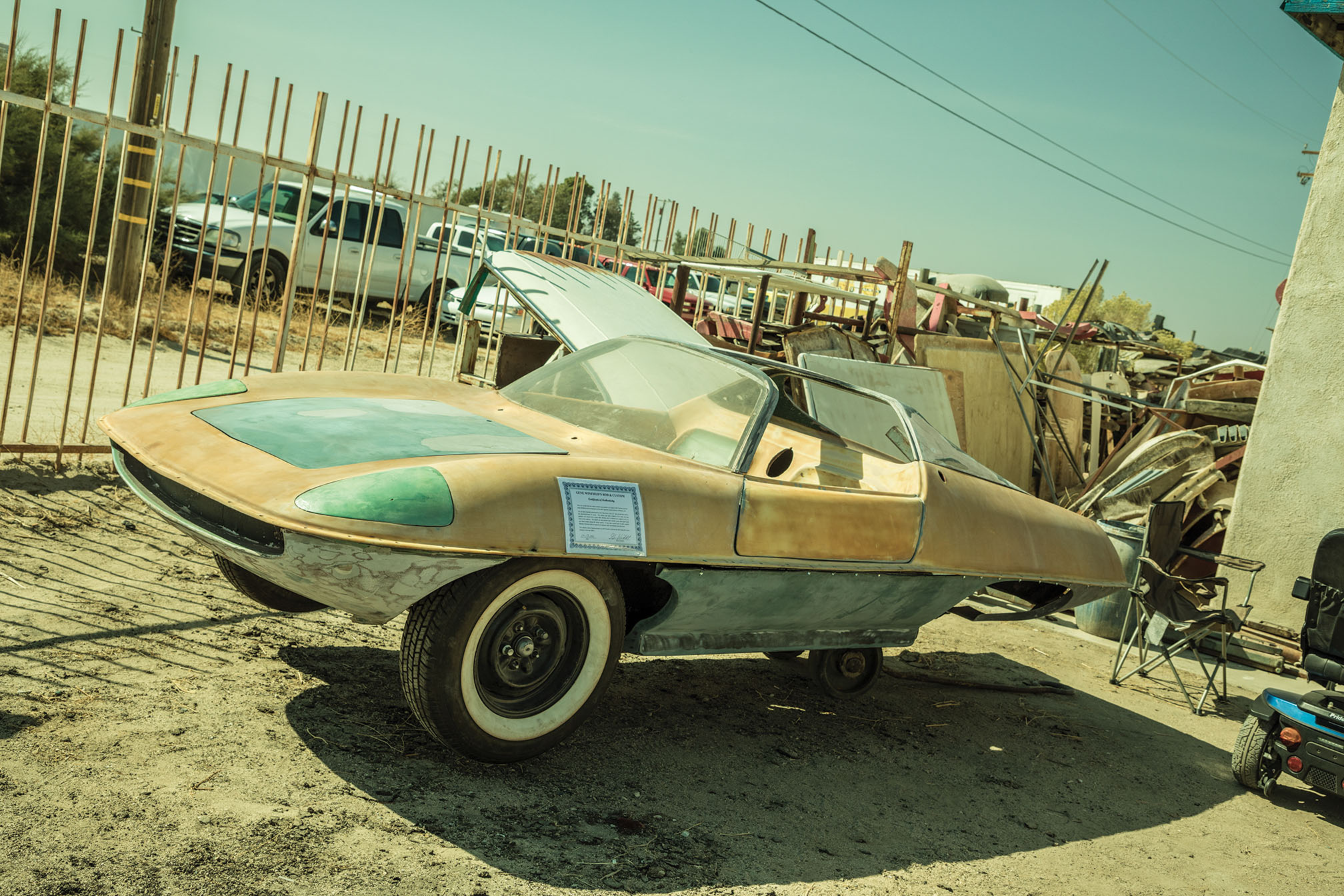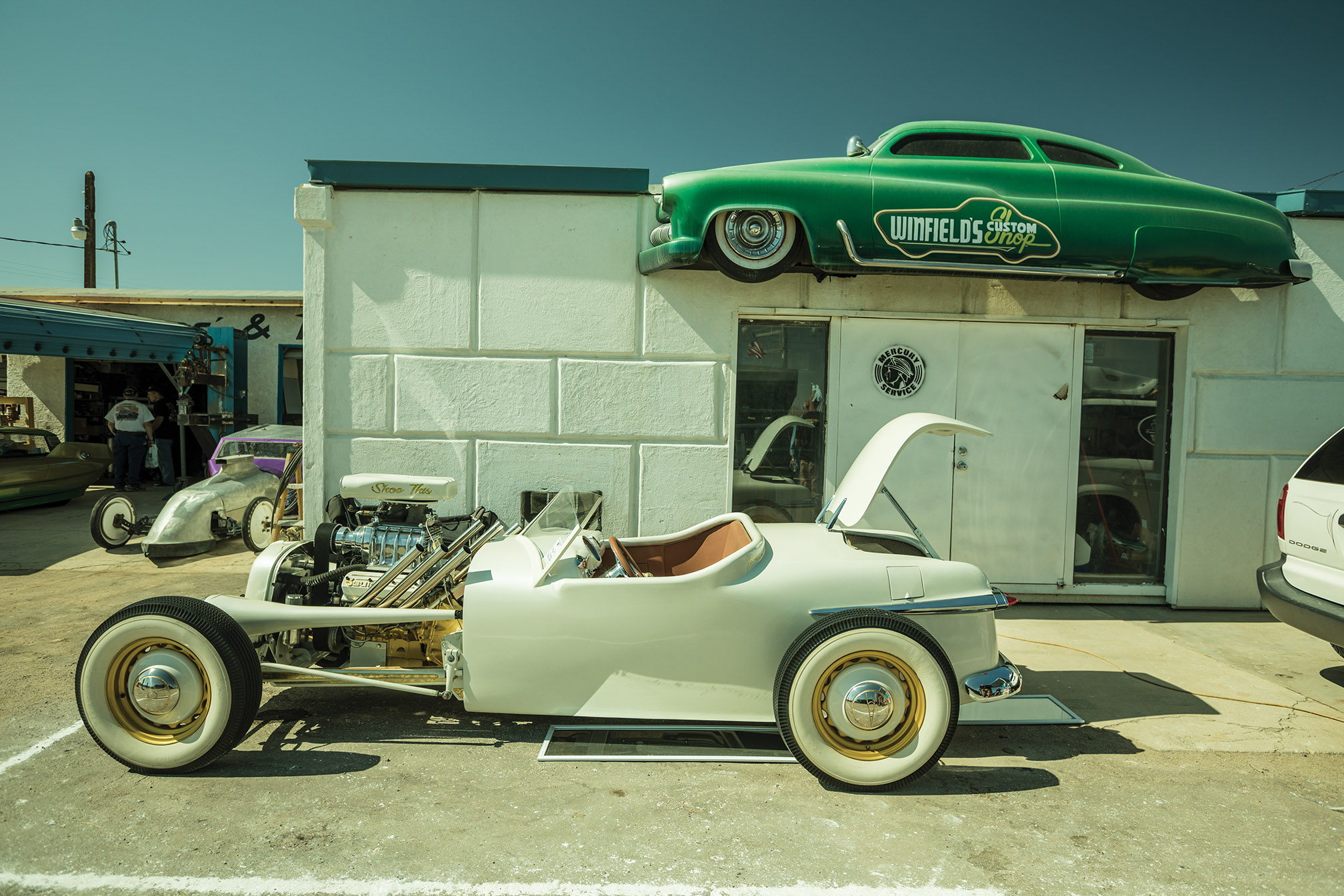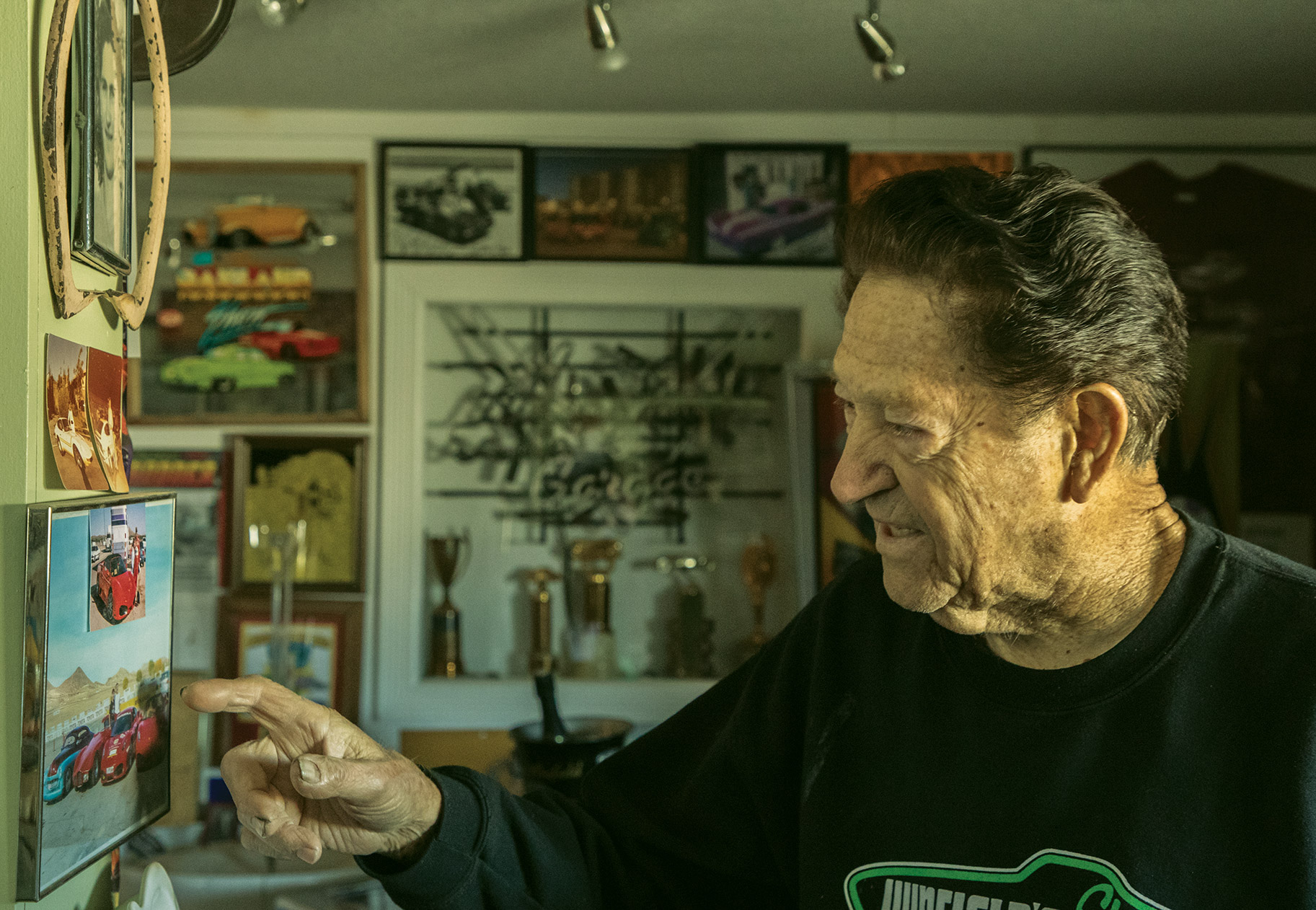Media | Articles
Desert of Dreams: The colorful world of custom king Gene Winfield
There’s a wind-swept oasis about 90 miles north of Hollywood, California, along a stretch of the old Sierra Highway, just beyond the dusty town of Rosamond. You’ll want to pull over when you see a sun-beaten stucco auto shop corralled by a steel-post fence. Out front are a faded 1970s sci-fi shuttlecraft from a B-movie no one remembers and cars from RoboCop and Blade Runner, long past their prime. That’s Gene Winfield Rod & Custom, and this legendary builder wants everyone to stop in.
Winfield’s place is a working shop and a shrine to himself, one of the custom world’s surviving kings. The main building stretches barely long enough to accommodate four service bays that connect to the shop’s heart, the paint booth. It is, after all, Winfield’s signature candy-color paint-blending technique that made him famous. The Winfield Fade became a sensation in 1960 when Winfield wowed the custom-car scene with the Jade Idol, a 1956 Mercury stretched out and flare-finned like one of Virgil Exner’s 1957 Forward Look Chryslers and wearing superbly blended leafy shades.
One doesn’t so much enter Winfield’s place; it’s more of an al fresco experience. Because of the relatively small workspace, much of his scrap stays outside exposed to the elements. The high-pitched whine of a metal sander and the dulcet tones of the 1970 White Plains hit My Baby Loves Lovin’ waft out of the shop on the cool high-desert air. Industrial shipping containers for additional storage lie scattered across the arid five-acre property. Out back, an orchard of sunbaked cars languishes.

Winfield employs four to six people, depending on who shows up on any given day. Lindsay Ross, Winfield’s current office manager and friend of 20 years, recently replaced the previous office guy after he went to prison for possession of assault rifles. “Out here in the desert, you take whatever drifts in,” Ross says of their eclectic payroll roster.
Marketplace
Buy and sell classics with confidence
You’d never guess by watching Winfield maneuver around his shop that his own odometer rolled past 90 last year. He strides proudly through his rusting chaos, his wavy matinee-idol hair perfectly groomed. He introduces his countless metal-shaping tools, most of which he made himself, as if they were old friends at a cocktail party. From the Pullmax, an electric reciprocating machine that shapes and cuts metal, to his many bead rollers and hammers, to an old solid-steel riveter from Lockheed, Winfield still uses them all. “Retirement is when they put you in the ground,” he quips.


Brushing the shop’s ubiquitous layer of dust off an English wheel, Winfield waxes nostalgic about a time when custom work was a competitive sport among contemporaries such as George Barris, Ed “Big Daddy” Roth, and Kenny Howard, a.k.a. Von Dutch. “Each of us was trying to outdo the other,” he says. Winfield travels the world offering clinics on hammering and shaping techniques, determined to keep his vanishing craft alive.
A ’40 Ford awaiting primer was set to make its world debut at Detroit Autorama and vie for the coveted Ridler Award, the lone recognition Winfield has never captured. Beside the Ford, a ’53 Pontiac needs some rear bumper fabrication work and custom taillights before heading back to Australia. Soft sunlight glistens off a ’49 Mercury, whose Winfield Fade flows seamlessly from golden sand to buttermilk to chartreuse to lily pad.
Winfield’s most significant project, his original Jade Idol, sits front and center, exactly where it belongs. “It was in storage in Massachusetts for 30 years. Then a man in Oregon bought it and is having me restore it to how it was originally.” Its matte-gray primer waits on Winfield’s colorful magic.

When you’re done checking out the metalwork, Winfield will gladly show you around his home. He resides on site in a museum chronicling his life. The walls are covered with his personal photos and memorabilia. Since he made the shuttlecraft for the original Star Trek TV series, there’s an entire room devoted to props from the show. He has guitars that he designs and sells, pinup lovelies, and even a bathroom that pays tribute to his former wife’s father-in-law, famous Lockheed designer Kelly Johnson. Please sign the guest book before you leave.
As dusk descends, Winfield gets the torch out, heating and bending a trim piece for the ’53 Pontiac. He’ll be back at it tomorrow, too, still shaping metal, still going for the perfect color fade, still dodging the reaper who’s taken old friends and rivals, and still living as though it were 1962, the subsequent years all blending into one candy-colored dream.
The article first appeared in Hagerty Drivers Club magazine. Click here to subscribe to our magazine and join the club.












